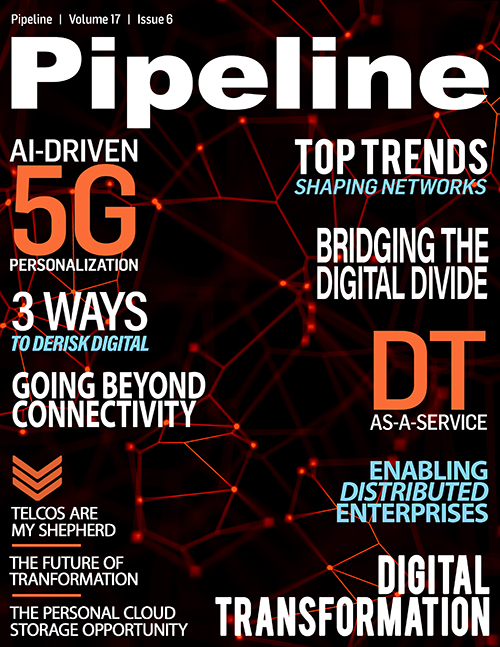AI-Driven Personalization: the Key for 5G Revenue
By: Martin Laesch

In 2017, the Economist stated that the world’s most valuable resource is no longer oil, but data. Four years later, this concept is only increasing in truth. Thanks to the revolutionary promises of 5G, artificial intelligence (AI) and machine learning (ML) possibilities are transforming the value of the data collected on consumers and our habits every single day. With 5G usage predicted to explode in coming years with over 1 billion 5G connections by 2023, the possibilities of AI and ML solutions are seemingly becoming limitless.
An unprecedented amount of data
Gone are the days when your mobile phone or laptop are the only devices collecting your data. Thanks to an explosion of connected markets and IoT applications, everything from smart watches to smart fridges can collect valuable data based on our habits, preferences and routines. We are also choosing to do more online, from shopping to socializing, meaning that we are willingly digitalizing more aspects of our personalities and tastes than ever before. Browsing in a store is no longer picking up a product off a shelf, but clicking and scrolling, which can be recorded, stored, and analyzed.
On top of the existing shift to digitalization, the COVID-19 pandemic has ramped up the change to new speeds. Despite the fact that consumer spending fell over the course of the pandemic, surveys show that online purchases have increased by six to ten percentage points across most product categories. Respondents said they would continue shopping online and focusing on essential products in the future.
But the digitalization of commercial services doesn’t end with online shopping. Physical, in-store experiences are using digital transformation methods, enabled by 5G, to entice customers, increase sales and reduce losses. Virtual and augmented reality has been made viable for commercial use by the high speed and low latency of 5G Internet. From seeing furniture placed in your own home, to trying out new hair colors and makeup styles before you part with your money, virtual reality is not only going to add a novelty element for shoppers but will also help them make informed decisions about their purchases—providing valuable data as they do so. When online shoppers currently return up to 40 percent of purchases, these tactics not only collect stacks of data from in-person shopping, but also reduce the number of costly returns made by customers, increasing profit for the business.
AI and ML possibilities
Of course, this abundance of data is only useful if properly collected and analyzed. When you consider that 90 percent of the world’s data has been collected in the last two years alone, and 2.5 quintillion (2.5 followed by 18 zeros) bytes of data are produced by humans every day, serious infrastructure needs to be implemented to handle it. There is no way that such high volumes of data can be looked at manually. This is where AI and ML come in.
AI and ML are not new concepts. In fact, the first academic conference on the topic was held way back in 1956. But now with the possibilities of 5G, these concepts are revolutionizing the way companies can collect and draw conclusions based on consumer data. This kind of infrastructure can collect your data, run it through algorithms and draw conclusions, then make recommendations to you and increase the chance of you making a purchase—without the need for another human’s involvement.
Machine learning models are able to automatically identify clusters representing groups of similar data, describe structures



















